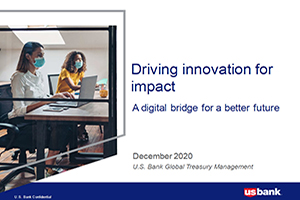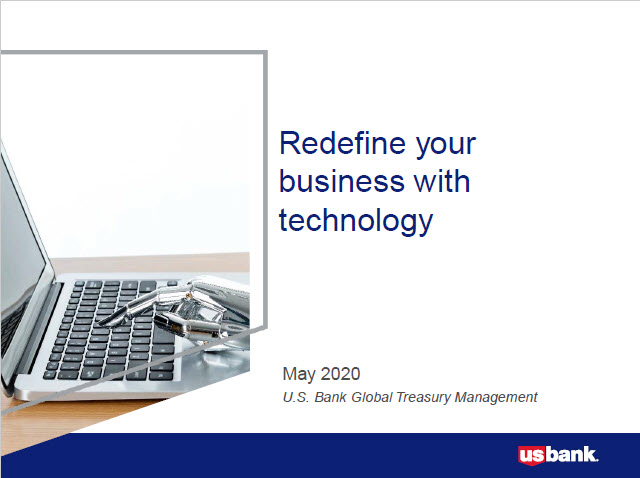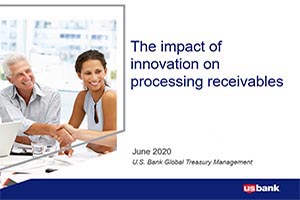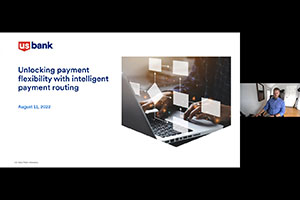
How blockchain technology is changing treasury

Blockchain: Separating hype from substance

Commercial real estate in 2020: Keeping up with the pace of change

Hybridization driving demand

The AI journey in finance: How to make it part of your strategy

Supply chain analysis: Merging technology and commerce

The ongoing evolution of custody

3 emerging technology trends for bankers

The startup scene in Reno: The story of Breadware

The startup scene in Reno: Emerging tech leads the way

Finance or operating lease? Deciphering the legalese of equipment finance

Common pitfalls to avoid in the equipment financing process

Buying or leasing? Questions to ask before signing a contract

Collateral options for ABL: What’s eligible, what’s not?

Easier onboarding: What to look for in an administrator

Luxembourg's thriving private debt market

3 questions to ask your equity, quant and CTA fund administrator

Private equity and the full-service administrator

The secret to successful service provider integration

Insource or outsource? 10 considerations

10 ways a global custodian can support your growth

The benefits of a full-service warehouse custodian

Emerging A/R solutions use artificial intelligence to target efficiency

Colleges respond to student needs by offering digital payments

6 timely reasons to integrate your receivables

Drivers for changing accounts receivable in 2021

Integrated receivables management solution supports customer focus at MSC Industrial Supply

Webinar: Digitizing receivables to transform B2B rent payments

Webinar: Robotic process automation

Tactical Treasury: Fraud prevention is a never-ending task

Webinar: Building digital bridges for treasury optimization

Authenticating cardholder data reduce e-commerce fraud

Webinar: CRE technology trends

Webinar: Driving innovation to impact treasury management

Webinar: CRE treasury leader roundtable

Webinar: Redefine your business with technology

Webinar: The impact of innovation on processing receivables

The cyber insurance question: Additional protection beyond prevention

Drive digital transformation with payments innovation

Role of complementary new channels in your payments strategy

Unlocking payment flexibility with intelligent payment routing

How electronic billing platforms improve government payments

What government officials should know about real-time payments

Higher education strategies for e-payment migration, fighting fraud

ABCs of APIs: Drive treasury efficiency with real-time connectivity

How emerging banking solutions enable better decisions

Want AP automation to pay both businesses and consumers?

Time is money: Intelligent Payment Routing saves businesses both

Digital trends poised to reshape hotel payments

Digital banking for business: How connectivity improves customer experience

Banking connectivity: Helping businesses deliver the easier, faster, more secure customer experience of the future

Enhancing the patient experience through people-centered payments

Tech tools to keep your restaurant operations running smoothly

Unexpected cost savings may be hiding in your payment strategy

Crack the SWIFT code for sending international wires

Automate escheatment for accounts payable to save time and money

ePOS cash register training tips and tricks

Cashless business pros and cons: Should you make the switch?

Automate accounts payable to optimize revenue and payments

A simple guide to set up your online ordering restaurant

What to know when investing in AP automation solutions

How AR technology is helping advance payment processing at Avera Health

The benefits of payment digitization: Pushing for simplicity

Collect utility and telecom bill payments faster

5 winning strategies for managing liquidity in volatile times

Zelle® helps Sunriver Resort make payments efficient and secure

3 ways to make practical use of real-time payments

How AI in treasury management is transforming finance

The future of financial leadership: More strategy, fewer spreadsheets

Can faster payments mean better payments?

Empowering managers with data automation and integration

4 ways Request for Payments (RfP) changes consumer bill pay

Delivering powerful results with SWIFT messaging and services

Digital Onboarding helps finance firm’s clients build communities

New technology streamlines M&A transactions

How RIAs can embrace technology to enhance personal touch

Innovative payroll solutions may help attract hourly workers

Flexibility remains essential for public sector workforces

Tailor Ridge eBill case study

What corporate treasurers need to know about Virtual Account Management

CFO survey: A shifting focus on ESG in business

Digital receivables to meet changing demand

CFO report: Driving growth via new business models and technology

Treasury management innovations earn Model Bank awards

CFO insights: Leading the recovery for sustainable growth

Staying organized when taking payments

Tools that can streamline staffing and employee management

Key considerations for online ordering systems

How iPads can help increase efficiency in your salon

How does an electronic point of sale help your business keep track of every dime?

Planning for restaurant startup costs and when to expect them

How to identify what technology is needed for your small business

How to redefine challenges with business collaboration

How small businesses are growing sales with online ordering

Why ecommerce for small business strategy is integral

Rethinking common time management tips

How running a business that aligns with core values is paying off

Meet the Milwaukee businessman behind Funky Fresh Spring Rolls

3 ways to gain loyalty with your customers

3 awkward situations Zelle can help avoid

How voice-activated devices work with banks


